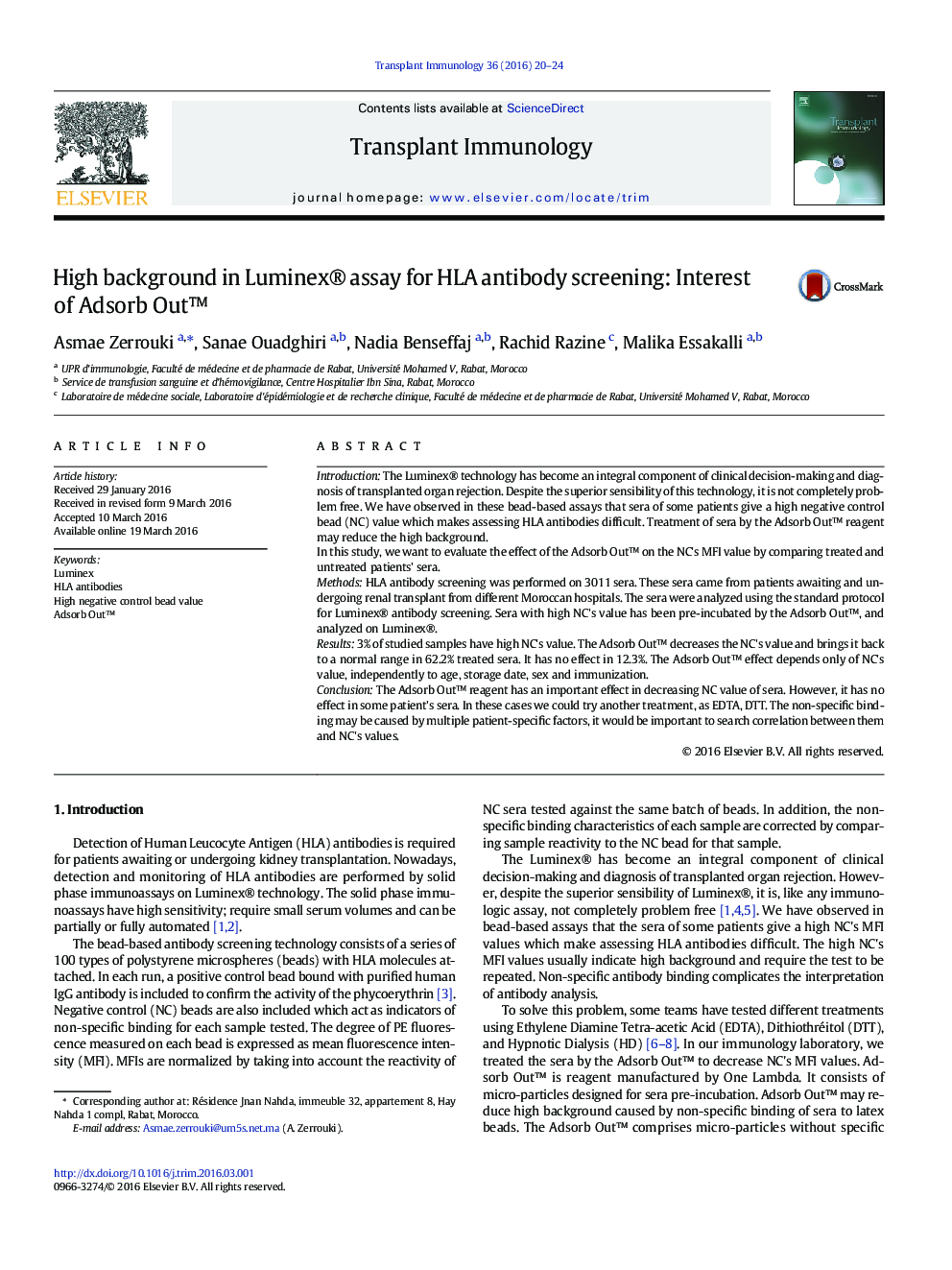| Article ID | Journal | Published Year | Pages | File Type |
|---|---|---|---|---|
| 3391984 | Transplant Immunology | 2016 | 5 Pages |
•High negative control bead MFI values•Comparison between untreated and Adsorb Out™ treated sera•Evaluate the Adsorb Out™ effect on the negative control MFI values
IntroductionThe Luminex® technology has become an integral component of clinical decision-making and diagnosis of transplanted organ rejection. Despite the superior sensibility of this technology, it is not completely problem free. We have observed in these bead-based assays that sera of some patients give a high negative control bead (NC) value which makes assessing HLA antibodies difficult. Treatment of sera by the Adsorb Out™ reagent may reduce the high background.In this study, we want to evaluate the effect of the Adsorb Out™ on the NC's MFI value by comparing treated and untreated patients' sera.MethodsHLA antibody screening was performed on 3011 sera. These sera came from patients awaiting and undergoing renal transplant from different Moroccan hospitals. The sera were analyzed using the standard protocol for Luminex® antibody screening. Sera with high NC's value has been pre-incubated by the Adsorb Out™, and analyzed on Luminex®.Results3% of studied samples have high NC's value. The Adsorb Out™ decreases the NC's value and brings it back to a normal range in 62.2% treated sera. It has no effect in 12.3%. The Adsorb Out™ effect depends only of NC's value, independently to age, storage date, sex and immunization.ConclusionThe Adsorb Out™ reagent has an important effect in decreasing NC value of sera. However, it has no effect in some patient's sera. In these cases we could try another treatment, as EDTA, DTT. The non-specific binding may be caused by multiple patient-specific factors, it would be important to search correlation between them and NC's values.
